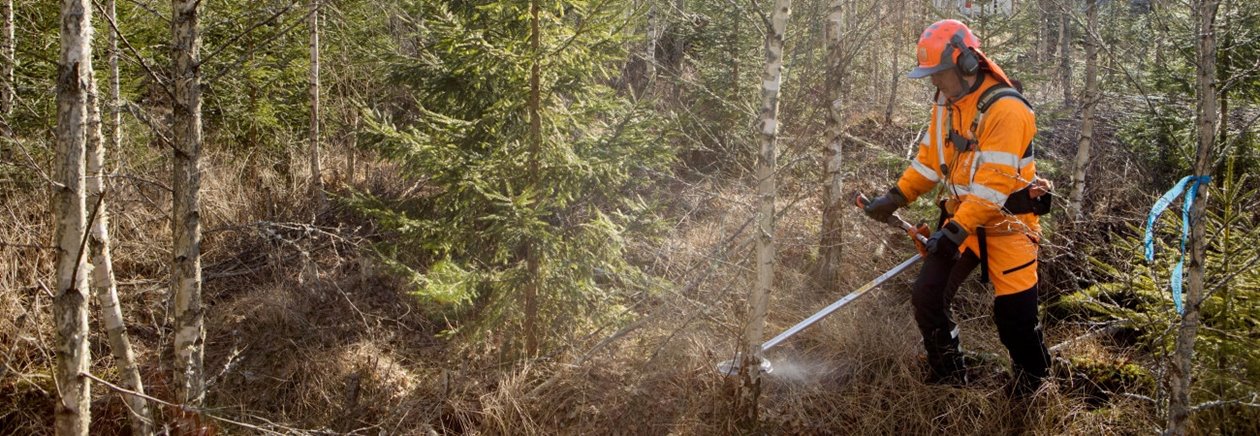A year in the life of our forests

We continue to bring you a snapshot of life in a typical forest estate owned by one of our 52,000 members. Jonas Larsson is our guide through the year. Managing Director of Södra Cell GmbH and Senior Advisor Forestry, he has been a Södra member for eight years with a plot of 20 hectares, just under half the size of an average Södra forest estate. His wife previously owned a Södra forest that was in the family for four generations, now managed by her brother.
March
As we wait for all signs of frost to pass before planting new seedlings, March is the ideal time to ensure the trees already growing have the best conditions to ensure they thrive. Rather like thinning out a row of carrot seedlings in a vegetable patch, pre-commercial thinning is a job with no immediate gain, but it needs to be done to ensure a healthy outcome for the future.
After planting, other tree species will often self-seed. This gives me the possibility to both promote wood production and increase biodiversity in the area. But left unattended, the forest floor can become overcrowded within a couple of years. Trees need space and those that compete for water, light and nutrients may still grow tall but not wide and will not thrive.
Typically, this first thinning is done when the trees are between three and six metres high, at around eight years old. They are too small to have any commercial value but are deliberately left in the forest to return their nutrients to the soil.
This year we identified three areas for pre-commercial thinning, one to do ourselves and due to time restraints, we enlisted the help of specialist contractors for the other two from Södra. One of the advantages of going through Södra is the knowledge that anyone who takes charge in our forest has been certified to the company’s standards, a prerequisite to work on Södra estates. The job they do affects our forest for the rest of the rotation period because this is about concentrating the growth potential into fewer trees for the best outcome in the future, so it’s essential they are trained in sustainable forest management.
Once thinned, we then leave the remaining trees to enjoy their bigger share of the forest’s resources until the first commercial thinning in another 10-15 years’ time.

Head of Business Support & Senior Advisor ForestryPhone: +46 70 518 93 63jo......@sodra.com
Show all content for topic
Subjects: Pulp
